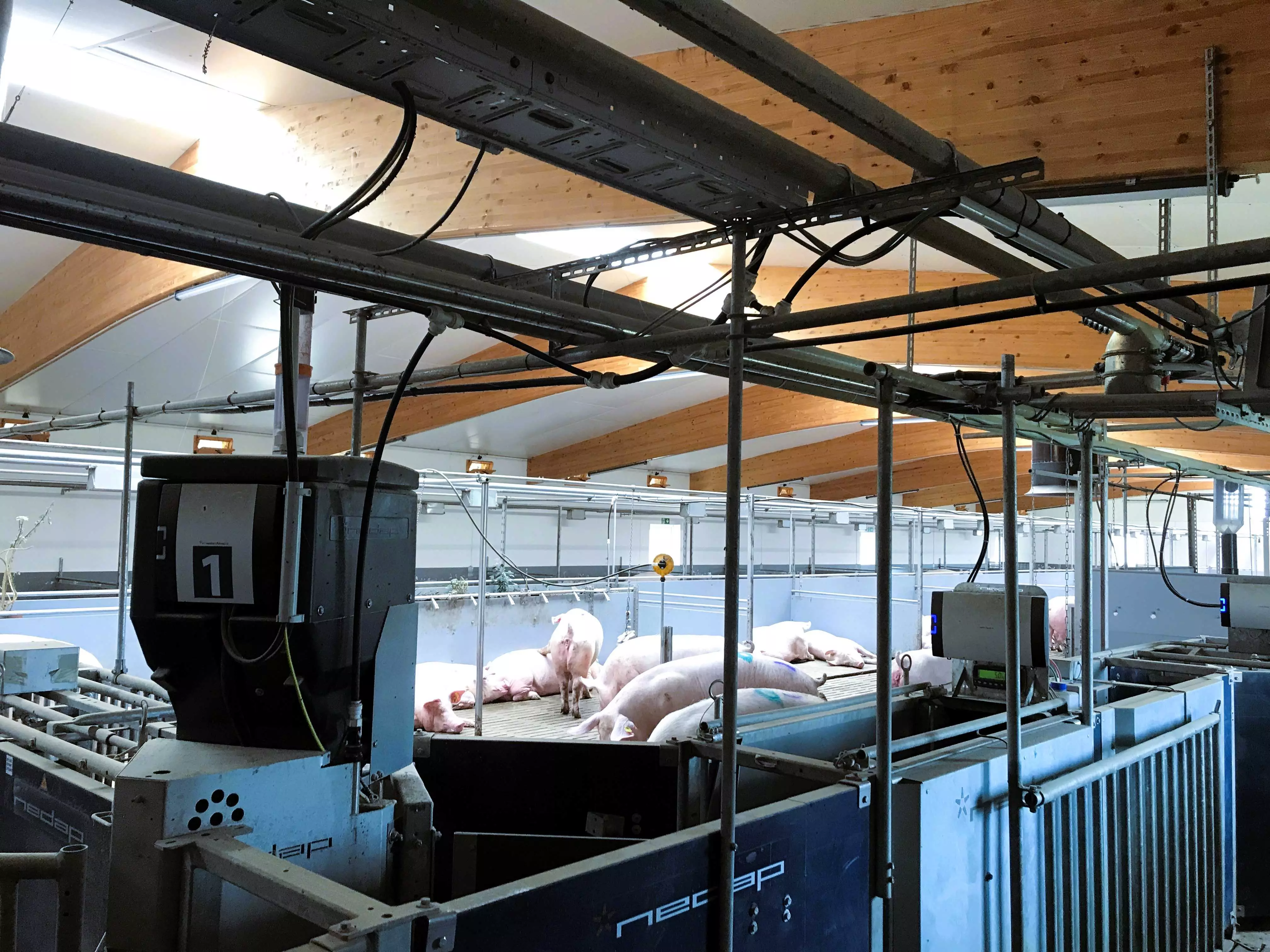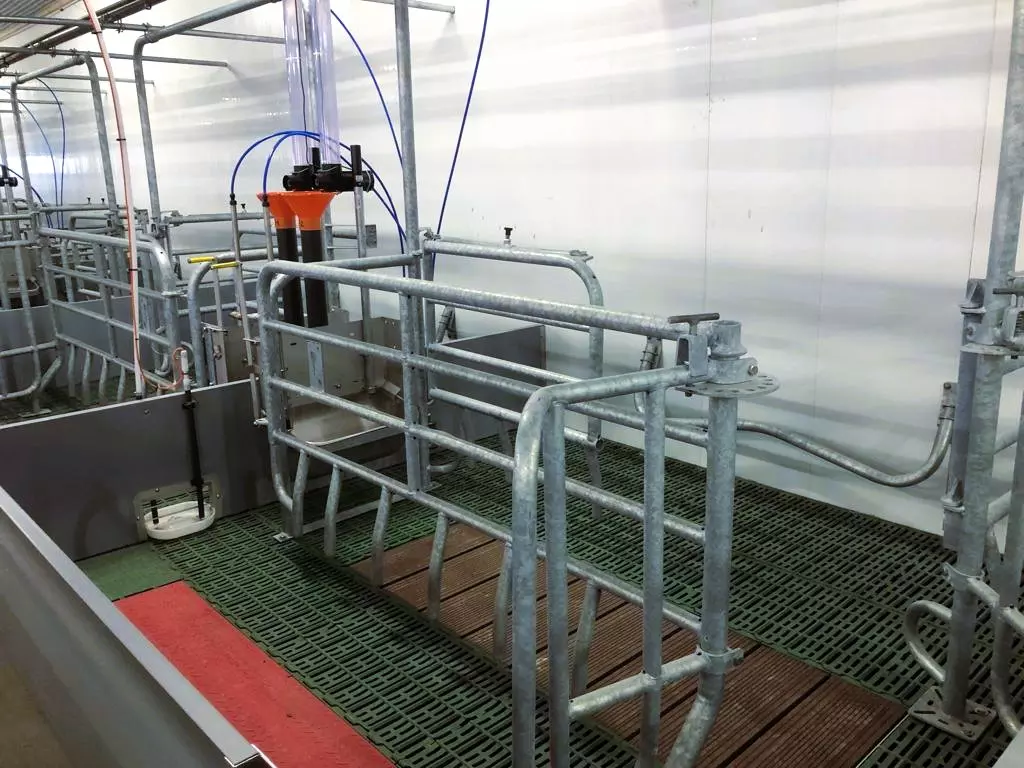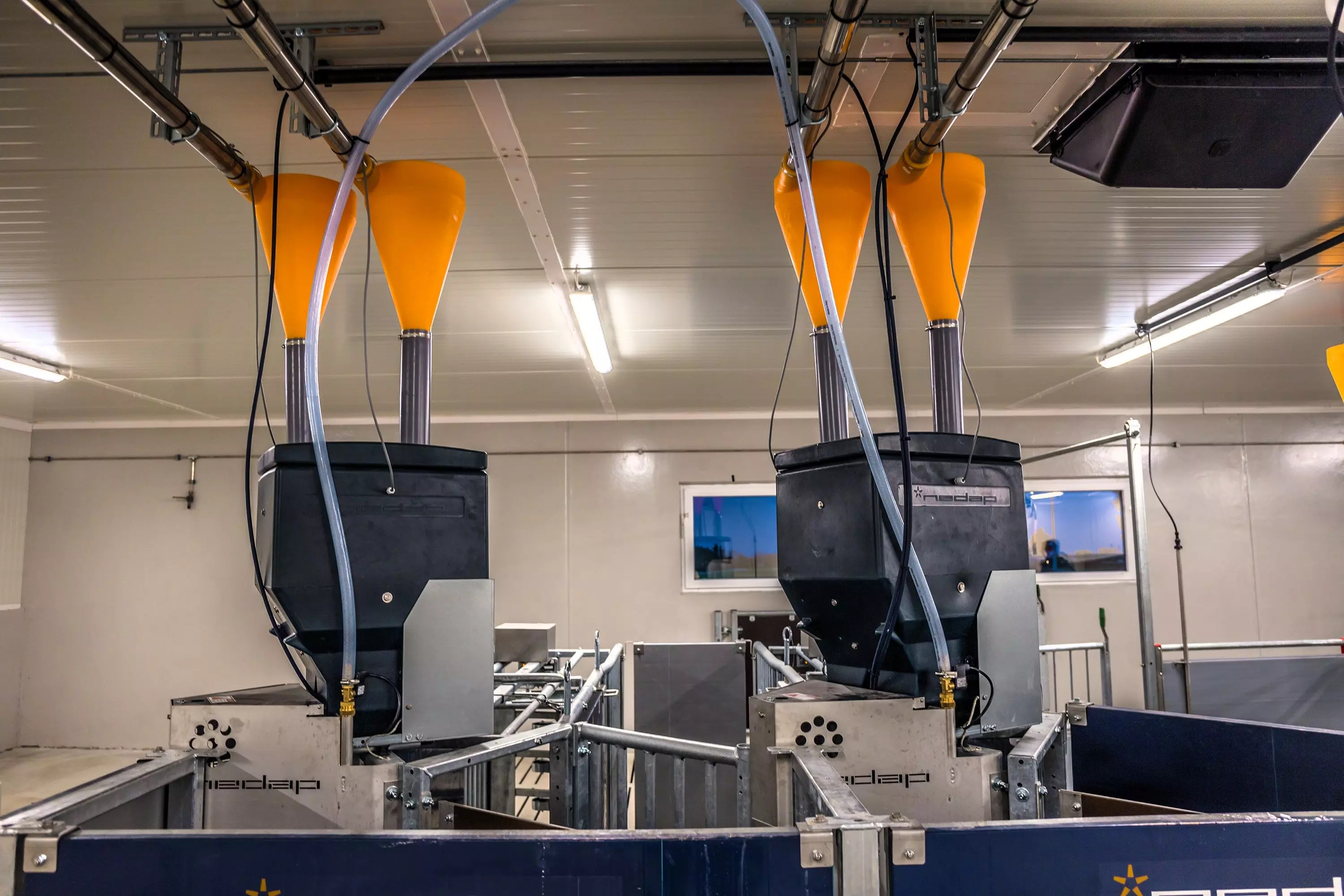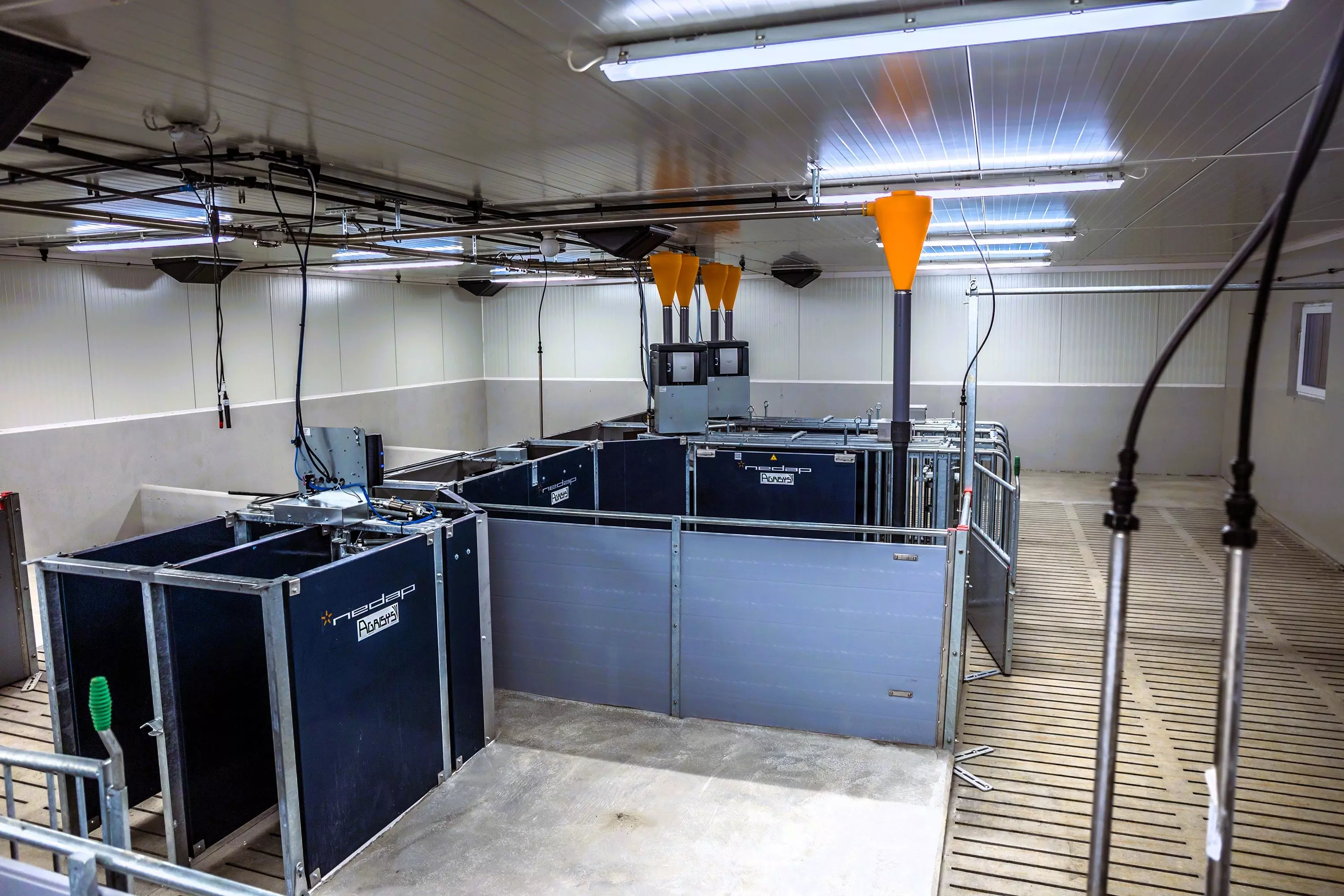Single-animal feeding
Individualised, needs-based, activated by the animal
In on-demand feeding, the animals activate sensors that trigger mechanisms through which individual data about the animal – such as the previous feed quantity, weight and health status – can be viewed. The feed quantity is adjusted to the animal’s age, weight class and health status, and supplemented with additives if necessary. The goal of on-demand feeding is to feed the animal automatically in accordance with its nutrient, mineral and vitamin requirements. The feeding technology used for this is decisive.
On-demand feeding can be implemented in farms of all sizes and tailored to the group size. This also allows on-demand feeding systems to be integrated into new or existing barn concepts.
On-demand stations preserve a state of calm in the barn, minimise stress and prevent jealousy between the animals. When the animals pass through the on-demand stations, they are identified by their RFID ear tag. This allows the animal to pass through the station undisturbed without any pressure from the other animals, who can also consume their feed in peace.
TEWE on-demand feeding involves automated technology such as gates, automatic feeders and sensors activated by the animals. Feeding can be performed individually via standardised automatic feeders or via TEWE feeding solutions. The on-demand station can optionally be fitted with automatic health monitoring systems and weight documentation data technology.
In conclusion
Single-animal feeding is a needs-based, efficient and stress-free solution for lactating sows and fattening animals. The individual adjustment of the feeding and the monitoring of each animal allow the health and performance of the animals and, ultimately, product quality to be improved. The integration of modern technologies enables extensive monitoring and documentation of the feeding process while also minimising stress within the barn.

Benefits
-
Needs-based, individualised single-animal feeding: Feeding is carried out based on the individual needs of each animal, taking into account factors such as their age, weight, health status and production stage. This improves the health and performance of the animals and, ultimately, product quality.
-
Monitored feed intake: Each animal is monitored to reduce feed costs and ensure efficient use of resources.
-
Prevention of competition and stress: Single-animal feeding minimises competitive pressure and stress within the barn, as every animal is fed individually without the influence of dominant peers. This improves feed uptake and the welfare of the animals.
-
Health monitoring: : Continuous monitoring of feeding behaviour allows changes to be detected early on, allowing timely interventions in the event of health issues.
Features
Needs-based adjustment of feeding:
Feeding is customised to the needs of each animal, ensuring an optimal supply of feed.
Continuous monitoring:
Each animal is monitored continuously to ensure complete control over the feeding process.
Flexibility of feeding methods:
Single-animal feeding is suitable for various feeding methods, such as liquid, dry and pneumatic, allowing it to meet the needs of the animals.
Integration of modern technologies:
Single-animal feeding can include automatic health tracking systems and weight documentation technology to enable comprehensive monitoring and documentation.
References




